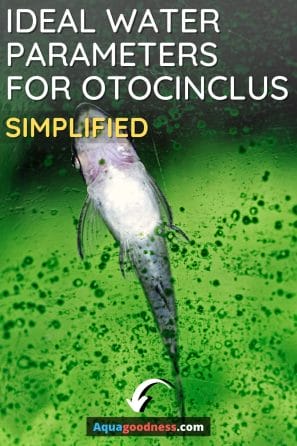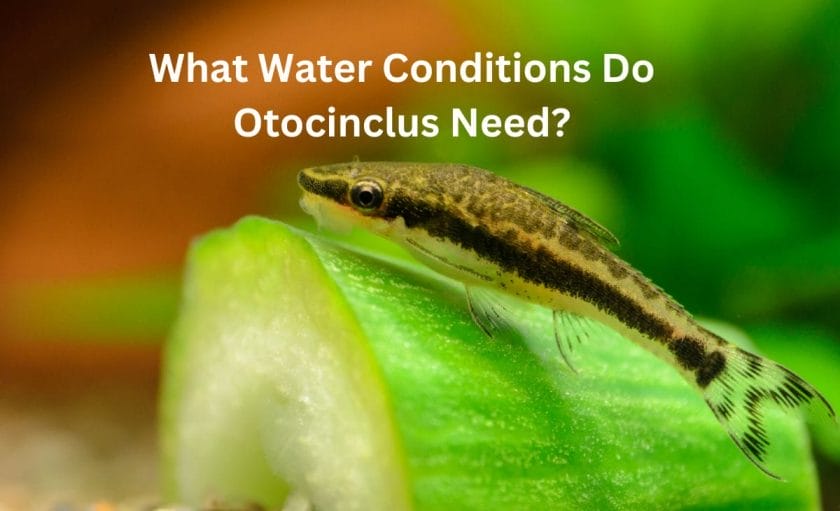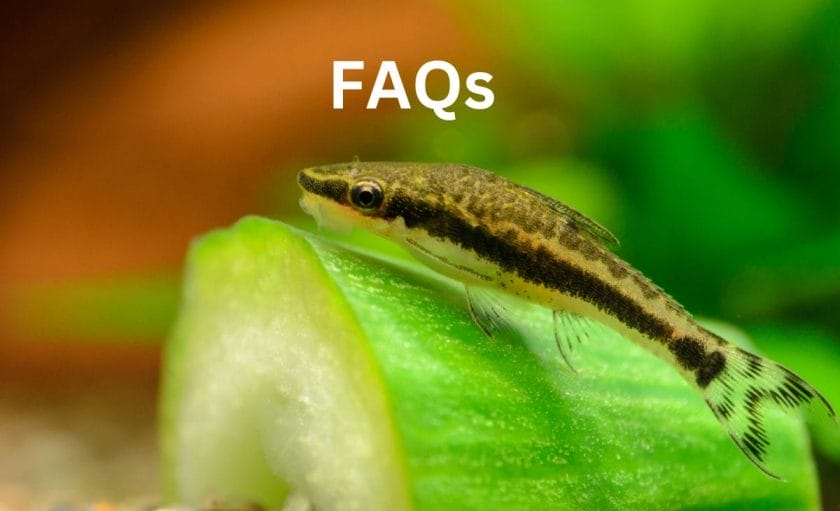Otocinclus are great fish that are easy to care for, but unbeknownst to many, they have fairly strict parameter requirements and can be quite sensitive to sudden changes in pH and temperature.
Otocinclus need a temperature of 72-79 F, a pH of 6.0-7.5, and water hardness from 2-8 dGH. Adjusting these parameters as needed will ensure your fish are happy and healthy.
Otocinclus are easy to feed and tend to themselves, but keeping the tank environment stable is the best way to ensure your fish thrive.
Pay attention, because in this article, I’m going to outline exactly what parameters your tank needs to be to house otocinclus and how you can target these parameters in your aquarium.

Table of Contents
What Water Conditions Do Otocinclus Need?

Otocinclus, like all freshwater aquarium fish, need to be in tank conditions that are right for them.
Here’s a handy chart you can reference
| Temperature | 72-79 F |
| pH | 6.0-7.5 |
| GH | Less than 15 |
| KH | Less than 10 |
| Ammonia and Nitrites | 0ppm |
| Nitrates | Less than 40 ppm |
Otocinclus also need to be in the right size tank. They only get up to 2 inches, so on paper, a 10-gallon tank is large enough; however, these fish prefer to be with others of their kind, so a minimum of 20 gallons is probably more ideal, especially if you have other fish in the tank.
Otocinclus also need hardscaping and plants, as their diet is algae based. If your water parameters are in optimal ranges, you will have some level of healthy algae growth that will serve as the main food source for your otocinclus.
Hardscaping and decorations provide hiding places for the otocinclus from semi-aggressive or aggressive fish; it’s a good principle to have lots of places to hide regardless of what fish you have in the tank, as it’s essential in reducing stress for your fish.
How to Keep Temperature Stable
You will almost certainly need a heater if you are going to keep a freshwater aquarium within stable temperature parameters unless you live in a tropical environment that doesn’t have true winters, such as Florida. Even then, it’s probably a good idea to invest in a heater for safety.
Surprisingly, otocinclus are quite delicate when it comes to temperature, and you’re going to have the hardest time maintaining your aquarium temps in the winter. Invest in a good heater appropriate to the size of your tank. I recommend the ViaAqua heater because it’s submersible, has a low-profile look, and helps keep your tank warm all winter.
Many heaters have a thermostat feature that allows you to set the temperature to your liking. 75-80 F is the golden range for most freshwater aquarium fish, and that’s true of the otocinclus, too.
Pay attention to your environment as well. Avoid leaving your tank somewhere drafty, such as near open windows or by the front door, as the tank will likely fluctuate when exposed to drafts. With many fish, the otocinclus included, sudden shifts in temperature are more dangerous than gradual increases or decreases due to the shock factor; stability is key.
How to Keep pH Stable
pH is the measure of the concentration of hydrogen. Substances can be acidic (a pH of less than 7), alkaline (a pH of more than 7) or neutral (a pH of about 7). Otocinclus are simple and easy in this regard; they can manage slightly acidic pH without a problem, and neutral pH is ok, too.
Measuring the rise and fall of your pH in a tank can be complex, as the reasons for an increase or decrease are multifaceted. An increase in tank activity or food can result in an increase in pH. On the other hand, a change in pH may be caused by the type of mineral content in the tank or the type of substrate you are using.
To increase pH, dilute your water with water changes more often or increase the aeration in your tank by adding an air stone or two.
Driftwood, by contrast, is a great way to lower your pH naturally over time. You can also pump CO2 into the water. Do not actively adjust your pH unless your tank conditions are way out of alignment or your fish are showing signs of stress and lethargy.
Monitoring is key. I recommend API’s Test Kit, as it tracks pH and other tank parameters. You’ll often find that something ailing your tank has unforeseen consequences, such as raising or lowering the pH, and a test kit is an ideal way to detect and address those causes.
How to Keep Water Hardness Stable
Water hardness denotes the amount of calcium and magnesium in a tank. As with all good things, too much or too little is bad for your tank.
Soft water has a low GH, while hard water has a higher GH. Again, a test kit can help you detect changes in GH and ensure your water hardness levels are in line with the recommended parameters in the table above.
You can Soak dechlorinated tap water in peat moss, almond leaves, or driftwood to decrease the hardness of your water or rely on remineralization products like Seachem Equilibrium to increase your water hardness.
Aquarists disagree on the importance of water hardness, but it’s fair to say that if you keep your other tank parameters in check and your hardness isn’t out of check, you don’t need to actively worry about it or try to maintain the perfect hardness.
How to Keep Nitrates in Check
Nitrates are the natural ‘end product’ of the nitrogen cycle, which goes from ammonia to nitrites to nitrates. A cycled tank will filter harmful ammonia into nitrites, then nitrates. The only way you get rid of nitrates is by doing water changes to dilute the concentration. Fishkeepers disagree on how regularly a tank needs a water change. Some support once a week, while others argue for once a month.
To summarize, diluting the water changes your other tank parameters, and changing out too much risks dumping the ‘good’ bacteria you’ve built up. On the other hand, leaving your water too long allows ammonia and nitrates to build up, harming your fish directly. Once your nitrates hit 30-40 ppm, it’s time for a water change of 30-50%.
To reduce your nitrates, water changes are your best bet, but you should also be sure to watch the amount you’re feeding. Overfeeding is the most common cause of adverse tank conditions for new aquarists. If there’s leftover food after half an hour to an hour, remove it and feed less next time. Unlike humans, fish do not appreciate leftovers.
If you’re constantly fighting with high nitrates (again, a common beginner problem), your bacteria colony in your filter might not be able to keep up with the waste your fish are producing, known as their bioload, leading to negative tank conditions. Remove fish from your tank if necessary to maintain your nitrate levels within.
FAQs

How Do I Test Water Parameters?
Testing water parameters is as easy as dipping a test strip in the water and waiting for results. Be sure not to touch the strip panels with your fingers, as they might mess up the reading. Dip in your tank and refer to the bottle to review your tank parameters.
What Are Some Common Otocinclus Diseases?
Cotton mold, white spot, gold dust, and roundworms are common diseases that otocinclus are susceptible to, with white spot being the most common blight on freshwater fish.
How Do I Know If My Otocinclus Are Sick?
Observation is key to detection. Ensure your otocinclus aren’t emaciated, lethargic, breathing heavily, or evidencing signs of parasites or illness. If you see something odd, it’s always worth research it, just in case.
Conclusion
The Otocinclus is great for many aquarium settings, but they can be sensitive. Stability in your tank is key to keeping them healthy and happy throughout their lifespan, which can be achieved through careful monitoring.
Be sure to pay attention to the above information in the article so you know how to adjust your tank parameters if necessary!